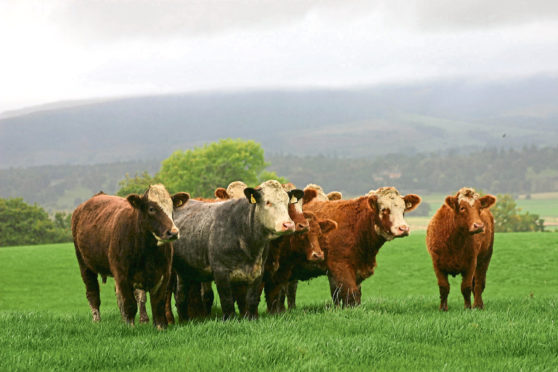Scottish beef and sheep farms with lower greenhouse gas emissions tend to be those with higher margins, according to Quality Meat Scotland (QMS).
Data from the levy body’s annual cattle and sheep enterprise profitability report, which covers the 2019 lamb and calf crop, shows a general reduction in emissions output per kg of beef or lamb produced in the past five years, particularly in better- performing businesses.
“There is a clear correlation between lower emissions intensity and better financial sustainability, with those in the top-third of financial performance having the lowest emissions intensity per kg of livestock output,” said QMS director of economics services Stuart Ashworth.
He said one way of being more efficient was finishing animals at a younger age, and although the average age of prime steers going for slaughter has reduced by four weeks to just under 21 months, there is scope for the beef sector to improve this further.
The report highlighted the industry’s reliance on support payments, as data on business margins excludes subsidy payments apart from those directly linked to production, said Mr Ashworth.
“Only 31% of suckler herds achieved a positive net margin – a decrease from 36% in 2018,” he added.
“This is also reflected among store finishers, with 30% of the businesses surveyed achieving a positive net margin, down from 38% in 2018.”
The sheep sector fared better due to better lambing and prices holding up, despite Brexit uncertainty.
According to the report 15% of hill ewe flocks made a positive net margin, up from 8% in 2018.
Net profitability among upland flocks increased to 75%, from 55% the year before; 62% of lowland flocks and 92% of store finishers enjoyed positive margins, up from 28% and 69% respectively.
Mr Ashworth predicted a tightening of prime cattle numbers early next year, and pressure on beef and lamb markets as the industry adjusts to life outside of Europe.
